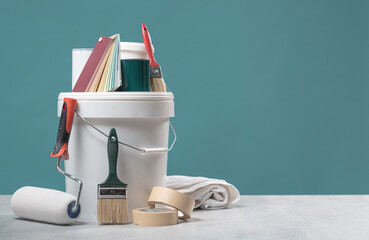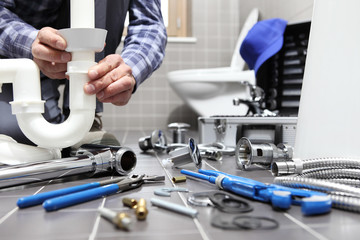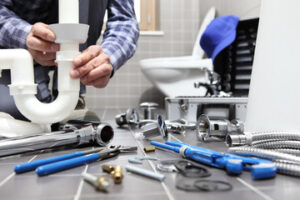Hiring Modesto Painting Company can completely transform the look and feel of any space. Professional painters bring expertise and precision that go beyond simple color application.
A fresh coat of paint can enhance the mood, create a sense of space, and even increase property value. Whether it’s an interior or exterior project, the right painting company ensures quality results that last.
Choosing the right paint color requires more than just picking a shade that looks good. Color psychology plays a crucial role in setting the mood and atmosphere of a room. Soft, neutral tones create a calming environment, while bold colors add energy and character. Professional painters understand how to balance color combinations to achieve the desired effect. Their experience in blending tones and finishes creates a cohesive look that enhances the overall aesthetic.
Surface preparation is key to achieving a smooth and durable finish. Professional painters assess the condition of walls and surfaces before starting any project. They clean, sand, and repair imperfections to create an even base. Proper preparation ensures that the paint adheres correctly and lasts longer without peeling or cracking. This attention to detail makes a significant difference in the final outcome.
The type of paint used also influences the durability and appearance of the finished project. High-quality paints offer better coverage, vibrant color retention, and resistance to wear. Professional painters select the appropriate paint for different surfaces, whether it’s drywall, wood, or metal. They also consider factors like humidity, sunlight exposure, and foot traffic to choose the right formula. The result is a long-lasting and professional finish.
Techniques used in painting have evolved to include more than just basic brush and roller application. Spray painting creates a smooth, even coat with minimal texture. Textured finishes, such as sponging or rag rolling, add depth and visual interest. Accent walls and custom patterns provide a personalized touch that reflects individual style. Professional painters have the skill to execute these techniques with precision and creativity.
Safety is a top priority in any painting project. Professional painters use proper protective gear and follow safety protocols to minimize risks. Ladders, scaffolding, and harnesses are used to access high or difficult-to-reach areas. Eco-friendly, low-VOC paints reduce harmful emissions and improve indoor air quality. This commitment to safety and environmental responsibility sets professional services apart from DIY approaches.
A professional painting company also manages project timelines and logistics efficiently. They provide a detailed plan outlining the scope of work, estimated completion time, and budget. Proper scheduling minimizes disruption to daily routines and ensures a smooth workflow. Clear communication with clients allows for adjustments and feedback throughout the process. This structured approach guarantees a stress-free experience for the client.
Exterior painting requires specialized knowledge and materials to withstand environmental exposure. Professional painters assess factors like weather patterns, sun exposure, and moisture levels before starting the project. Proper surface sealing and priming protect against water damage and fading. The use of weather-resistant paint ensures that the finish remains vibrant and intact for years. This expertise extends the life of the paint job and enhances curb appeal.
Color consistency and precision are hallmarks of professional painting services. Skilled painters use techniques such as cutting-in and edge taping to create clean lines and sharp corners. Multiple coats are applied evenly to prevent streaks and uneven coverage. Blending techniques ensure that touch-ups and repairs remain seamless. This level of craftsmanship creates a polished and flawless result.
Commercial painting projects require careful planning and execution. Large-scale projects, such as office buildings or retail spaces, involve complex logistics and coordination. Professional painters work efficiently to minimize downtime and disruption to business operations. Specialized equipment, such as sprayers and lifts, allows for quick and even coverage of large surfaces. Professional project management ensures that deadlines are met without compromising quality.
Interior painting transforms the atmosphere of living spaces. Lighter tones create an open and airy feel, while darker shades add warmth and intimacy. Accent walls and statement ceilings draw attention to architectural details. Professional painters advise on color combinations that complement furniture and decor. This customized approach enhances the overall design and ambiance of the space.
Restoring historic properties requires specialized knowledge and techniques. Professional painters understand how to match original colors and finishes to preserve the property’s character. Careful preparation and repair of aged surfaces prevent further deterioration. Eco-friendly paints and low-impact methods protect the integrity of historic materials. This expertise ensures that the restoration maintains both authenticity and longevity.
The finishing touches of a paint job make a significant difference in the overall result. Professional painters ensure that trim, baseboards, and molding are painted with precision. Door and window frames receive careful attention to create crisp and defined edges. Protective coatings are applied to enhance durability and resistance to wear. This attention to detail creates a clean and professional finish.
Painting kitchen cabinets and built-ins requires a specialized approach. Professional painters remove doors and hardware for thorough preparation and even coverage. High-adhesion primers prevent chipping and peeling over time. Spray finishes create a smooth and factory-like appearance. The result is a refreshed and modern look that enhances the kitchen’s overall style.
Staircases and banisters benefit from professional painting techniques. High-traffic areas require durable finishes that resist scuffs and wear. Professional painters use sanding and priming methods to create a strong base. Multiple coats of high-quality paint ensure even coverage and long-lasting results. The final result enhances the visual appeal and functionality of the staircase.
Eco-friendly painting options have become increasingly popular. Low-VOC and zero-VOC paints reduce indoor air pollution and improve health and safety. Recycled and sustainable materials, such as natural pigments and plant-based binders, reduce environmental impact. Professional painters source eco-friendly products that meet both performance and sustainability standards. This commitment to green practices reflects modern environmental values.
High ceilings and vaulted spaces present unique challenges. Professional painters use extension poles, scaffolding, and lifts to reach difficult areas safely. Specialized techniques ensure even coverage and clean lines at high elevations. The right choice of color and finish enhances the sense of height and openness. Professional expertise ensures that even the most challenging spaces receive a flawless finish.
Custom wall finishes add texture and character to a room. Venetian plaster creates a smooth and polished surface with subtle depth. Faux finishes mimic the look of natural materials like marble or wood. Metallic and pearlescent paints add a touch of glamour and light reflection. Professional painters have the training and skill to execute these finishes with precision and artistry.
Commercial spaces benefit from durable and easy-to-maintain finishes. Washable and scuff-resistant paints withstand heavy use and frequent cleaning. Professional painters use commercial-grade products designed for high-traffic environments. Accent walls and branding elements reflect the company’s identity and enhance customer experience. A professional finish improves both functionality and visual appeal.
Exterior wood surfaces require specialized care and protection. Professional painters use primers and sealants to prevent moisture damage and wood rot. Stains and protective coatings enhance the natural grain and color of the wood. Regular maintenance and touch-ups preserve the finish and extend the lifespan of exterior wood surfaces. This proactive approach ensures that the wood remains beautiful and durable.
Painting projects often uncover hidden issues such as mold, water damage, or structural defects. Professional painters identify and address these issues before proceeding with the project. Repairing and sealing damaged areas prevents future problems and ensures a stable surface. This comprehensive approach improves both the appearance and integrity of the structure. Professional insight and problem-solving enhance the overall value of the project.
The success of a professional painting project lies in the combination of skill, materials, and attention to detail. Professional painters bring industry knowledge and technical expertise to every project. Their ability to balance aesthetics, durability, and environmental considerations sets them apart. A professionally painted space reflects quality, care, and craftsmanship. The result is a space that feels refreshed, elevated, and uniquely tailored to the client’s vision.


